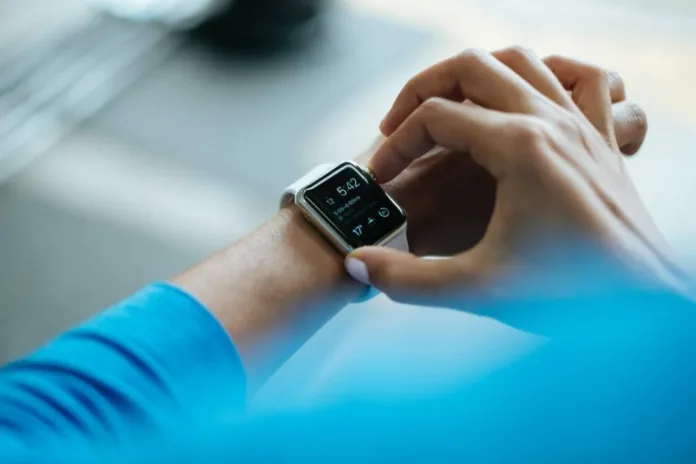
In today’s rapidly evolving digital landscape, lifesaving wearable technology is transforming how we respond to emergencies. No longer are smartphones and wearables just tools for communication and fitness tracking—they are now becoming essential companions in times of crisis. From fall detection to emergency SOS capabilities, the latest tech innovations are helping save lives, offering peace of mind to millions worldwide.
As our dependence on smart devices grows, so too does their potential in emergency response and health monitoring. The fusion of medical insights with cutting-edge engineering has led to smartwatches that call for help when you fall and smartphones that alert authorities if you’re in danger. This article explores how these technological marvels are revolutionizing public safety and individual well-being.
📱 The Rise of Lifesaving Features in Everyday Tech
What was once the domain of medical devices is now seamlessly integrated into consumer technology. Smartphones and wearables are being embedded with features that provide instant access to emergency services, making them more than just communication tools. The evolution of lifesaving wearable technology means that help is no longer just a phone call away—it’s triggered automatically in certain scenarios.
Many of today’s leading smart devices come equipped with advanced emergency SOS capabilities, fall detection sensors, and real-time health monitoring systems. These features are especially crucial for the elderly, people with chronic medical conditions, and those living alone.
🧠 How Fall Detection Technology Works
One of the most significant innovations in recent years is fall detection technology. Found in devices like Apple Watch and select Android smartwatches, this feature uses a combination of accelerometers, gyroscopes, and machine learning algorithms to determine if the wearer has taken a hard fall.
If a fall is detected and the user doesn’t respond within a set time frame, the device will automatically notify emergency contacts and share the user’s location. This has proven especially useful for elderly users, where falls are a common and dangerous occurrence. In many reported cases, this technology has made the difference between life and death.
🚨 Emergency SOS: A Lifeline in Your Pocket
Smartphone emergency features have come a long way. Most smartphones now allow users to quickly call for help by pressing a series of buttons—usually five quick presses of the power button or holding both volume and side buttons. Once activated, these features can contact emergency services, send your real-time location to pre-selected contacts, and even record audio or video in some models.
Whether you’re in a car accident, facing a medical emergency, or feel threatened, emergency SOS smartphones act as a silent but powerful ally. This quick access to assistance has been instrumental in helping people escape from dangerous situations.
⌚ Smartwatches: Your Always-On Medical Alert System
Medical alert smartwatches are no longer just for tracking your heart rate. New models are capable of measuring blood oxygen levels, detecting irregular heartbeats (like atrial fibrillation), and even taking ECGs. When these readings fall out of range, the device can prompt users to take action or notify caregivers and emergency services.
This kind of proactive alerting is invaluable for individuals with known heart conditions or other chronic illnesses. Wearable health monitoring is evolving from being passive trackers to active guardians.
🧬 Health Data Sharing in Emergencies
Another powerful feature of lifesaving wearable technology is the ability to share health data in real time with emergency responders. Some smart devices store critical medical information—like blood type, allergies, medication history, and chronic conditions—which can be accessed by emergency personnel even when the phone is locked.
This real-time access to accurate, pre-logged health data can significantly enhance emergency treatment outcomes. Paramedics and ER staff no longer have to rely solely on patient recollection or ID cards—they can use this digital profile for faster and more effective care.
🌍 Use Cases: Real Stories, Real Impact
Real-life incidents underscore the importance of these tech features. In one case, an elderly woman in the U.S. suffered a fall in her garden and was unable to reach her phone. Her smartwatch detected the fall and contacted 911, who reached her within minutes. In another instance, a jogger was followed and felt unsafe—he discreetly activated emergency SOS on his phone, and authorities were able to intervene.
Such stories highlight the growing reliance on lifesaving wearable technology not just for convenience but as a genuine life-saving tool.
🔒 Privacy and Limitations
Despite the benefits, concerns remain. Privacy advocates warn against constant tracking, and there are challenges in ensuring false positives don’t flood emergency services. Still, the consensus is that when lives are at stake, these technologies are more of a blessing than a burden.
Users should also remember that while these tools are incredibly helpful, they should not be solely relied upon. Keeping emergency contacts updated and being aware of how to manually activate emergency features remains vital.
🔮 The Future of Emergency Tech
Looking ahead, the integration of AI and predictive analytics into these systems will further enhance their effectiveness. Future devices may detect patterns of behavior and provide early warnings for conditions like heart attacks or strokes. Imagine a smartwatch that not only reacts to a fall but can predict it before it happens based on gait analysis.
In the broader landscape of smart cities and IoT, this technology could also integrate with smart home systems, cars, and even public transportation—creating an entire ecosystem designed to keep individuals safe at every touchpoint.
✅ Conclusion
The convergence of health and technology has given rise to a new era in emergency response. From fall detection and emergency SOS smartphones to advanced medical alert smartwatches, lifesaving wearable technology is bridging the gap between an incident and a timely intervention. As these innovations continue to evolve, they promise to make the world a safer, more responsive place for everyone.
For consumers, this means investing in wearables and smartphones isn’t just about fitness or convenience anymore—it’s about safety, security, and the power to call for help when it matters most.